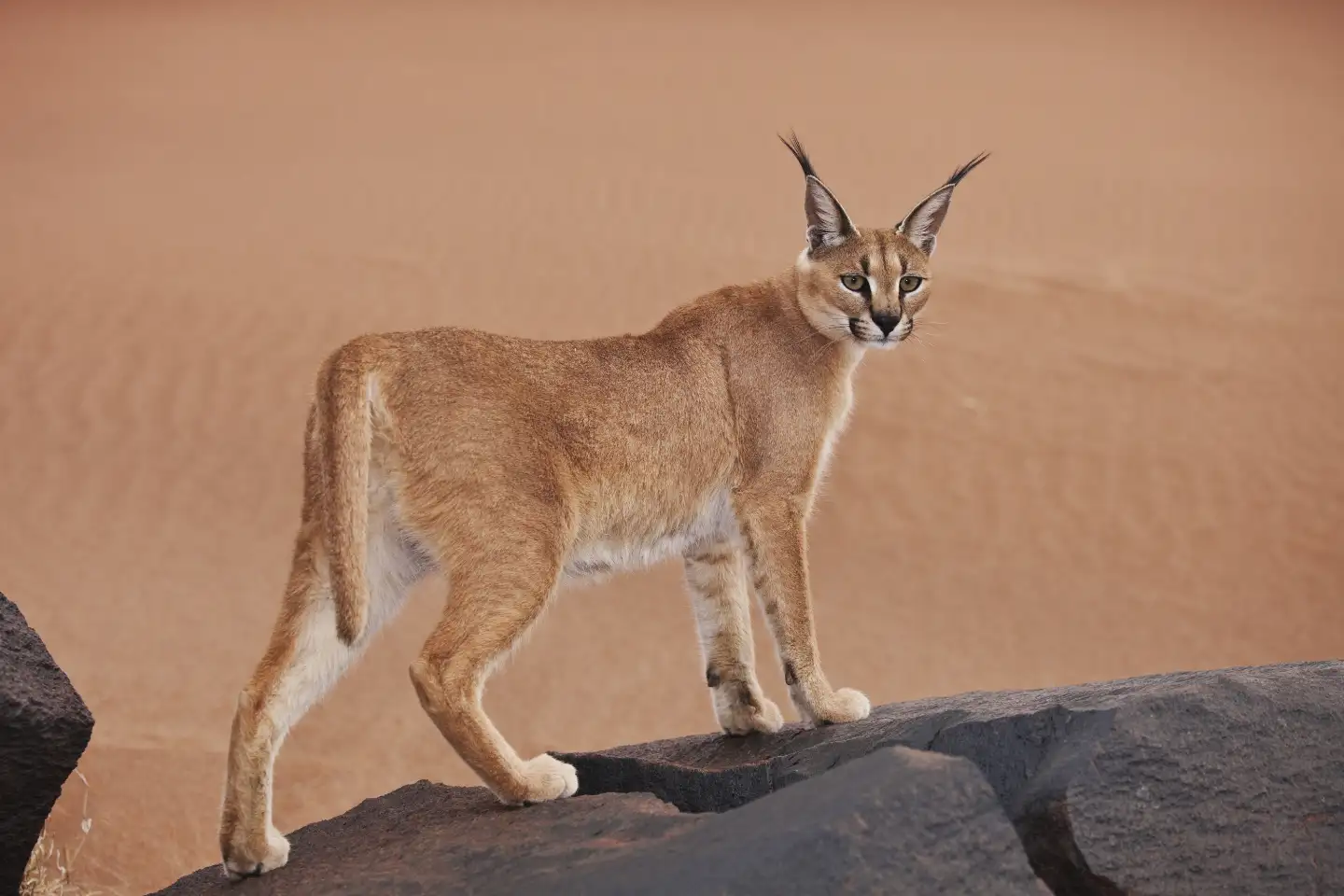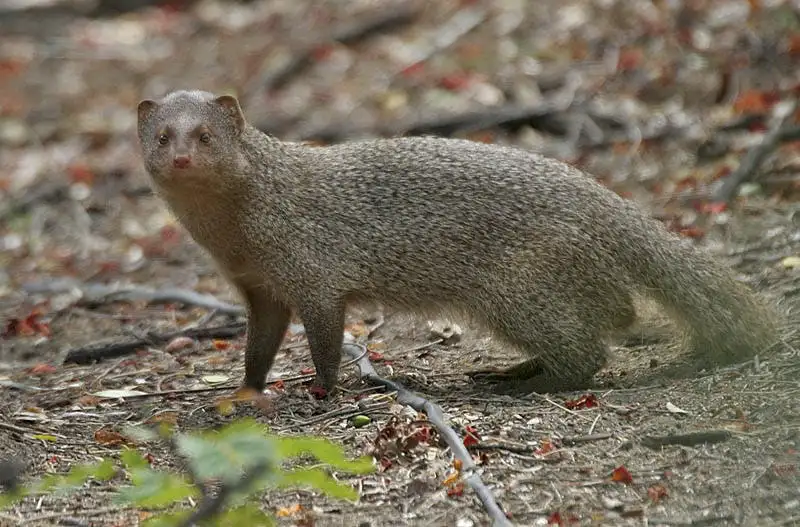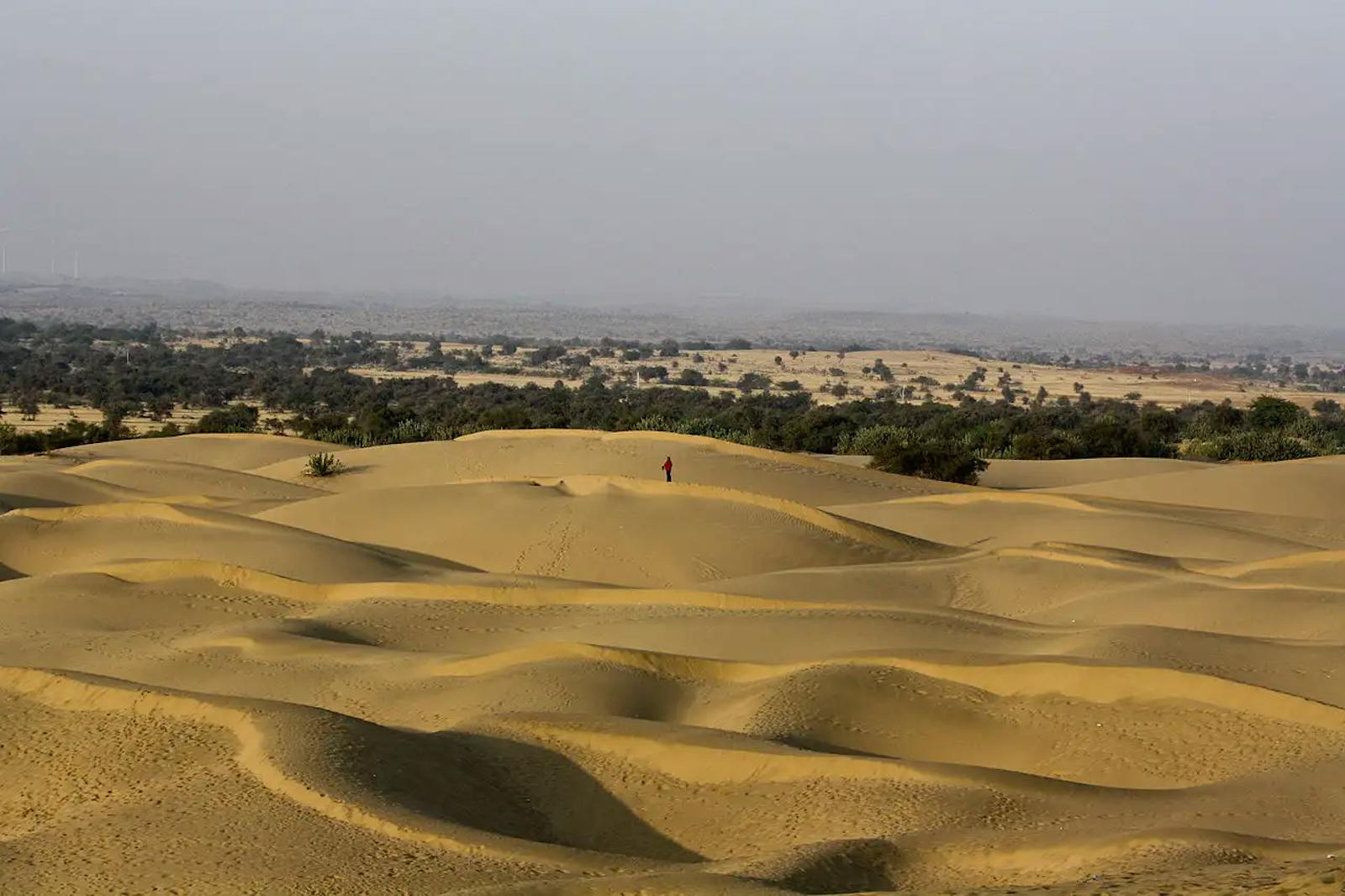Thar Desert
The ecoregion’s land area is provided in units of 1,000 hectares. The conservation target is the Global Safety Net (GSN1) area for the given ecoregion. The protection level indicates the percentage of the GSN goal that is currently protected on a scale of 0-10. N/A means data is not available at this time.
Bioregion: North Indomalayan Deserts & Scrub Forest (IM4)
Realm: Indomalaya
Ecoregion Size (1000 ha):
23,918
Ecoregion ID:
318
Conservation Target:
18%
Protection Level:
10
States: India, Pakistan
The Thar Desert is undoubtedly the most inhospitable ecoregion in the Indo-Pacific region; yet still, it supports a human population density of over 80 people per km2, making it the most densely populated desert in the world. At the same time, the desert supports a relatively rich biodiversity with several large mammals, notably the blue bull, blackbuck, and Indian gazelle or chinkara. They were once the prey for lions and cheetah, which reportedly lived in the southern parts of the ecoregion until the turn of the last century.

The flagship species of the Thar Desert ecoregion is the caracal. Photo | Wildscreen Exchange
This ecoregion lies to the west of the Aravalli Mountain Range in the northwestern Indian States of Gujarat, Rajasthan, extending across the border to the Punjab and Sind regions of Pakistan. It is considered to be the 9th largest subtropical desert. About 5,000 years ago, this desert was the site of Mohenjo Daro and Harappa, ancient cities that supported a civilization contemporaneous with ancient Egypt, Mesopotamia, and Minoan Crete.
The climate is defined by the extremes. Winter temperatures approach freezing, while summer temperatures soar over 50°C. Rainfall is limited to 100-500 mm from July to September but is mostly unpredictable and erratic.
About a tenth of the ecoregion are sand dunes, while the rest is craggy rock formations and compacted salt-lake bottoms. Unlike other large deserts, there are no oases or artesian wells that provide relief.

Indian grey mongoose (Herpestes edwardsii). Image credit: J.M.Garg, CC BY-SA 3.0
The vegetation is unsurprisingly influenced by the extreme climate. The sparse vegetation consists of plants adapted to growing in dry conditions, known as xerophilous plants. These include several kinds of grass and scrub-type vegetation of low trees of Acacia, Prosopis, Tamarix, and Zizyphus. These trees have small leaves with a thick waxy surface to reduce evapotranspiration and save water in hot and dry environments.
Despite the extreme climate, over 40 species of mammals live here. Most have evolved and adapted to survive in these extreme conditions. In addition to the larger antelopes and gazelles, there are several smaller species, ranging from the very small antelope rat with long hind legs to carnivores such as grey mongoose, the aggressive ratel or honey badger, desert fox, striped hyena, jungle cat, Indian desert wild cat, and caracal.
The caracal is a medium-sized wild cat that has distinctively large tapering ears with long tufts of hair that exaggerate their length. Adapted to desert conditions, the caracal can survive long periods without drinking water. Their hunting strategy includes jumping about 3 m into the air to catch birds in flight by batting them with their paws. Years ago in India and Iran, caracals were tamed and trained to hunt birds.
Among the 141 birds known in this ecoregion, the great Indian bustard is a globally threatened species whose populations in this ecoregion have rebounded in recent years.
_-_cropped%20Image%20credit%20Creative%20Commmons%20Rushikesh%20Deshmukh%20DOP.webp)
Striped hyena. Image credit: Creative Commons, Rushikesh Deshmukh DOP
Grazing by livestock such as sheep and goats is intensive. This affects soil fertility, exacerbates erosion, and destroys the native vegetation. Together with recent climatic changes, these pressures combine to degrade and destroy the fragile desert ecosystems. Nonetheless, the ecoregion has large protected areas where adequate management and protection can be administered to mitigate the widespread threats.
Priority conservation actions:
- Improve land-use zoning to mitigate ad hoc and uncontrolled agricultural practices, especially with the availability of irrigation water.
- Control livestock grazing and minimize its impact on the desert ecosystem.
- Continue to support the conservation effort in the protected areas.
-
-
1. Sivaperuman, C., Baqri, Q.H., Ramaswamy, G. and Naseema, M. eds., 2008. Faunal ecology and conservation of the Great Indian Desert. Springer Science & Business Media.
2. Wikramanayake, E, E. Dinerstein, et al. 2002. Terrestrial Ecoregions of the Indo-Pacific: A Conservation Assessment. Island Press.
3. Khan, T.I., Dular, A.K. and Solomon, D.M., 2003. Biodiversity conservation in the Thar Desert; with emphasis on endemic and medicinal plants. The Environmentalist, 23(2), pp.137-144 -
Cite this page: Thar Desert. Ecoregion Snapshots: Descriptive Abstracts of the Terrestrial Ecoregions of the World, 2021. Developed by One Earth and RESOLVE. https://www.oneearth.org/ecoregions/thar-desert/
-



